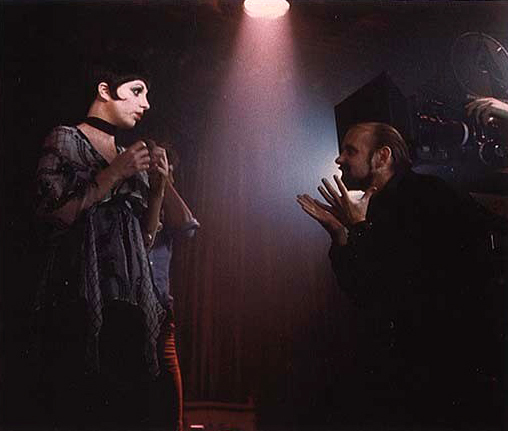
President’s Desk: I Am a Camera
Thoughts on the great Geoffrey Unsworth, BSC and his influential, Oscar-winning camerawork.

When he published his 1939 novel Goodbye to Berlin — a semi-autobiographical account of his time in Weimar-era Berlin — little did novelist Christopher Isherwood know what an afterlife the book would have.
Well, not the book itself, exactly, but the characters he created — most notably the English cabaret singer Sally Bowles. First introduced in Isherwood’s 1937 novella Sally Bowles, the character was center-stage, so to speak, in Goodbye to Berlin, and again in the stage plays and movies that were adapted from it: first I Am a Camera (a 1951 stage play and 1955 movie), then Cabaret (debuting on stage in 1966, and on film in 1972). In the film version of the latter, Sally Bowles was forever immortalized in the performance of Liza Minnelli
The title I Am a Camera comes from a line on the novel’s first page: “I am a camera with its shutter open, quite passive, recording, not thinking.” This feels to me like a state of mind for a cinematographer, and a metaphor to inspire us to observe and interpret. It also just so happens that the film Cabaret — directed by Bob Fosse and photographed by Geoffrey Unsworth, BSC — stands as one of the films that’s most influenced and inspired me.
Cabaret is certainly one of Unsworth’s finest accomplishments. In a piece that’s appeared on both FilmReference.com and Cinematographers.nl, Fiona Valentine wrote of Unsworth’s contributions to the film, “The grotesquerie of the Kit Kat Klub, and the decaying fabric of pre-Second World War Germany are impeccably rendered by Unsworth’s expressionistic camerawork. The effort to draw the cinema audience into the mood of the nightclub by aligning its visual perspective with that of the clientele is highly successful.” Furthermore, his softly colored and diffused interpretation of German realism created a look that’s unique.

Unsworth’s work also included 2001: A Space Odyssey, in which he supported a highly stylish “Stanley Kubrick look” with a clarity and precision that remains visually haunting. There’s also the painterly, romantic impression he lent to Murder on the Orient Express; the playful and vibrant images and camera moves that set the style for the comic-book franchise film Superman; the intensity and majestic realism of Becket and Cromwell; and his poetic interpretation of war in A Bridge Too Far.
Valentine’s tribute to the cinematographer also notes, “Unsworth enjoyed a harmonious and unusually long partnership with his camera assistant and operator Peter MacDonald. Their association spanned two decades and about 30 features. MacDonald describes Unsworth as an ‘impressionist,’ and has said that he was an intuitive, as opposed to a technical, cameraman who preferred to be guided by his instincts rather than by elaborate advance planning in the selection of lighting, angles, and composition. …“Unsworth was committed to the principle that the cameraman’s input should be unobtrusive,” Valentine continued. ”He believed that cinematography should not call attention to itself but support directorial intent and the flow of the action. Yet, even though he believed that his contribution should be imperceptible, there is little doubt that his craftsmanship and artistry have left an indelible impression on modern cinema.”
Unsworth won an Oscar for his work on Cabaret, and another, posthumously, for his contributions to Roman Polanski’s Tess. Unsworth shared the latter Oscar with ASC member Ghislain Cloquet, who took over after Unsworth died during the production. Unsworth is credited with most of the exteriors in the first half of the film — scenes that, in their use of natural light, are reminiscent of Néstor Almendros, ASC’s work on Days of Heaven. The exteriors in Tess are painterly and mysteriously dramatic. They seem to borrow from period art more so than Unsworth’s previous work, emphasizing his chameleon-like nature as a cameraman, and poetically reflecting the cinematographic principle: “I Am a Camera.”
It is ironic that a movie with as eloquent a title as I Am a Camera received no critical acclaim. Isherwood himself is reported to have called it “disgusting ooh-la-la, near-pornographic trash — a shameful exhibition.”
Even the stage version of I Am a Camera had its detractors, perhaps the best-remembered of whom was the theater critic Walter Kerr, who penned the witty putdown, “Me no Leica.”

Kees van Oostrum
ASC President




